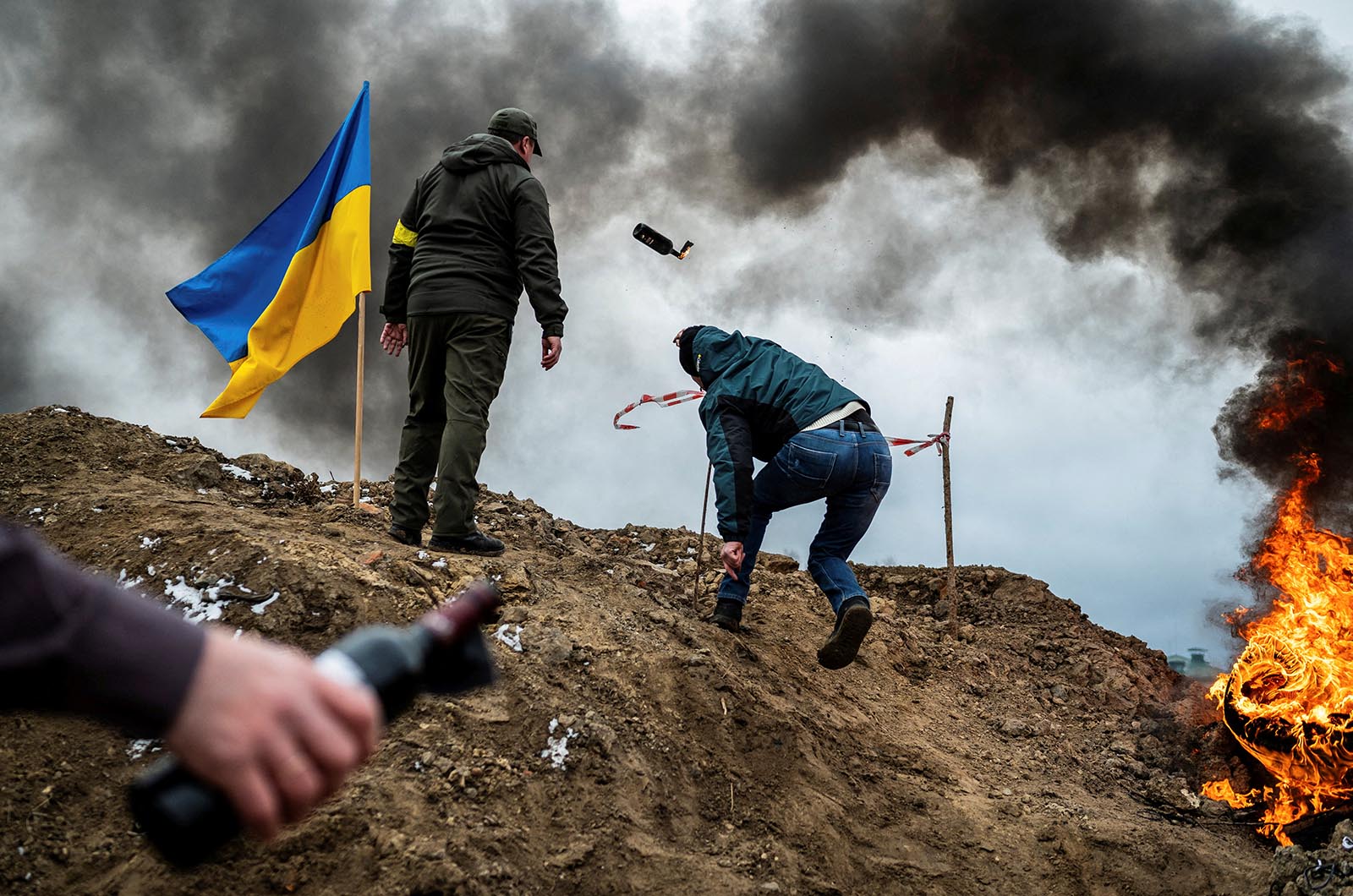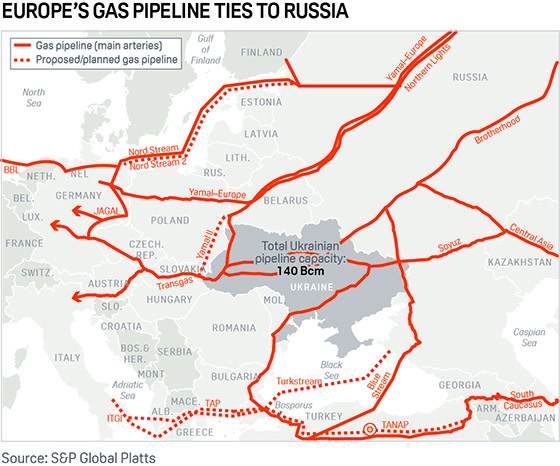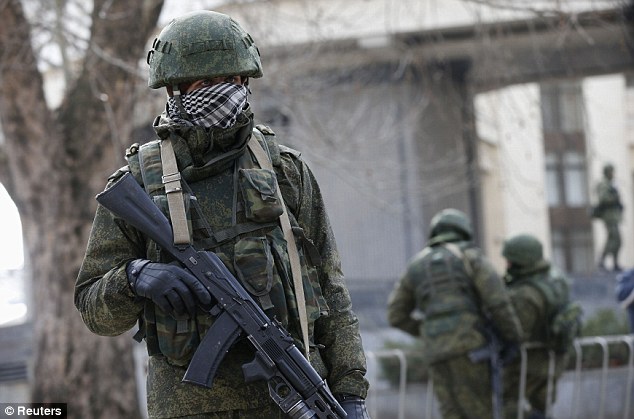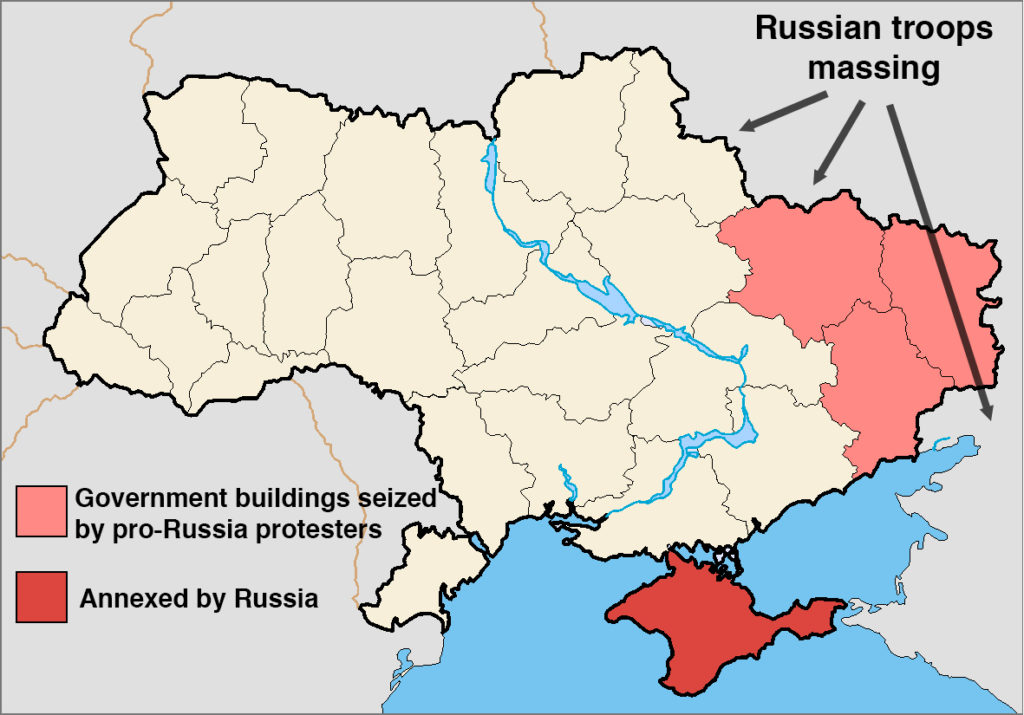Nearly 30 days after the Russian invasion of Ukraine, it is clear the Kremlin has not achieved the quick victory it expected. Based on numerous invalid assumptions, the trigger for President Putin’s decision to invade was the perception of a window of opportunity. Virtually no one expected sustained Ukrainian military resistance. There are signs Russian planners actually thought some mixed Russian-Ukrainian soldiers would refuse to fight and that that the Russians in Ukraine – 40% of the population in the eastern Luhansk and Donetsk ‘oblasts’ – would welcome the Russian Army as liberators. Putin was not the only one fooled. Many in the West, who believed he would take the threat of sanctions more seriously, found themselves caught completely off guard by the invasion. Based on his past experience with the European Union (EU) and the United States however, Putin had no reason to expect anything other than symbolic sanctions, and certainly nothing that would impact the Russian economy as a whole. It’s likely he also believed leading European nations to be in a weak position to respond due to upcoming Presidential elections in France and a new Chancellor in Germany.
Since then, sanctions against Russia have continued to mount and their impacts will accelerate over the coming months but it is not at all clear how long greater Europe can sustain them. While the Russians will not have a choice, European politicians fear the pressure of limited gas imports – and at least equally important – shortfalls of grain and meat supplies around the world.
Russian Strategic Interests
Clear Russian strategic interests drive Putin’s objectives in the war for Ukraine. Most important is the vital interest to protect Russian minorities in eastern Ukraine and on the Crimean Peninsula and – eventually – those in Transnistria/Moldova. This is so important, the Putin regime would likely fall before Russia would be ready to accept the re-establishment of Ukrainian authority over these areas. Next is the re-establishment of a buffer zone between Russia and NATO on the Kremlin’s terms. Prior to the invasion, Putin believed that increasing integration with the European Union had removed Ukraine as a buffer with Europe if not NATO. The Russian plan to establish a dependent government in Kyiv in the first days of the war failed spectacularly and every day that passes erodes the legitimacy of any future Russia-installed replacements.*
The geostrategic advantages of the war include giving Moscow full control of the Sea of Azov and the northern Black Sea coast; both of which are necessary for the Kremlin’s least important though still critical interest: maintaining the area of the former Soviet Union as an area of influence. The Donbas, with its huge coal and iron ore deposits, was once the heart of heavy industry in the Soviet Union. Putin intends to once again tie the eastern Oblasts – and preferably the whole of Ukraine – to the Russian economy. Though one might assume that maintaining the stability of the Russian economy is a vital Russian interest, it appears Putin has such a firm grip on Russian society that this is – currently – of lower priority. He certainly relies on the capacity of his own population to suffer in favor of the long-term development of the Russian economy as a whole. Lastly, it is becoming apparent that Putin’s personal center of gravity is the support of his security apparatus. Recent purges at Russia’s intelligence service (FSB) by the Federal Guard Service (FSO) suggest there are Ukraine war-related divisions within the state that required such action. Supervised directly by the President of the Russian Federation, this action by the FSO could reflect deep insecurities Putin has about his own power.

Use of the Instruments of National Power
Protecting these interests by achieving Russia’s stated objectives requires all its instruments of national power. Most obviously, the full-scale, heavy-handed military offensive against Ukraine will create its own reality on the ground. It will also, Putin hopes, deter a NATO response due to the threat of nuclear escalation. Though Russian military action is the primary inspiration behind the significant western response, it is the informational instrument of the Kremlin’s power that affects Russian citizens. The emphasis on the threat of Ukrainian “Nazis” against Russian minorities in the east and even against Russia itself justifies the military means by which Putin claims to safeguard the “motherland”. Meanwhile, Russian diplomats conduct ceasefire negotiations designed to undermine Ukraine’s will to resist and split public opinion. The longer the war drags on, the more Moscow will rely on diplomacy to secure as many of its strategic objectives as possible. Long a strong suit of Russian leaders, diplomacy could succeed where the military failed. Finally, Russia wields significant economic power over Europe through its gas supply but it is a double-edged sword. While both sides threaten to limit gas deliveries to Europe, they also race to harden their economies against these sanctions. In Russia’s case, alternative partners, such as China, promise to replace – at least in part – the EU and the US. Though the strategy has merit, the partial denial of access to the international financial system makes its implementation particularly difficult.
Counter-Strategy
The western center of gravity is now to maintain the wide rejection of the Russian aggression and support for the global sanctions regime. That said, Allied messaging has been less than ideal since the invasion began. NATO membership is not, nor has it ever been, a realistic option for Ukraine as it would have led to a very high risk of direct military confrontation with NATO. Admitting Ukraine to the Alliance after 2014 would have resulted in bringing Russian occupation forces into what was now NATO territory. Failing to rule it out publicly has only provided arguments for Putin’s recent propaganda. That is not to say that the West should give Putin a free hand. Unfortunate statements by the American President Joe Biden and some other Western politicians that NATO would not get involved militarily in Ukraine have convinced Moscow there is no military risk. Instead, NATO must focus attention on their efforts to support Ukraine. Enabling Ukrainian forces to sustain the war against Russia will do much to deter others (like China) from similar adventures. In this regard, the West has exceeded expectations. Assistance includes not only weapons deliveries (including deadly Stinger surface-to-air missiles and Javelin, Panzerfaust, and NLAW anti-tank missiles), but also logistics and extensive intelligence support. Ultimately, the combination of military assistance and comprehensive sanctions shall force Russia to end the war or at least prevent a further expansion of Russian influence beyond Ukraine by making it extremely costly to do so.
The effectiveness of Western sanctions and Putin’s ability to sustain the war are still open questions and America must urgently consider European economic independence from Russia and also China in some key economic areas. More broadly, the West must strengthen international rejection of Russia’s invasion and account for its consequences for many Arab and African states that import an enormous portion of their grain, meat, and other agricultural products from Ukraine and Russia. In several countries there is already a significant increase in prices for consumers, while the stocks of provisions could run empty within a few short months. As seen during the lead up to the “Arab Spring,” this could have a huge destabilizing effect on these countries.
*It is interesting to note that former Ukrainian President Viktor Yanukovych might be Putin’s man of choice for a future Russia-friendly president. Yanukovych, a native of Donetsk, the largest city of the Donbas, was removed by the Parliament in February 2014 after massive street protests (“Revolution of Dignity”).
 Wolfgang Pusztai is a freelance security and policy analyst. He was the Austrian Defense Attaché to Libya from 2007 to 2012. He has written several pieces for The Affiliate Network including Libya: From Civil War to Regional Conflict?
Wolfgang Pusztai is a freelance security and policy analyst. He was the Austrian Defense Attaché to Libya from 2007 to 2012. He has written several pieces for The Affiliate Network including Libya: From Civil War to Regional Conflict?




 Geo-Strategic Imperative
Geo-Strategic Imperative s Golightly is an Independent Consulting Engineer specializing in offshore renewable energy, based in Brussels. Prior to 2010 he worked in the Oil & Gas industry.
s Golightly is an Independent Consulting Engineer specializing in offshore renewable energy, based in Brussels. Prior to 2010 he worked in the Oil & Gas industry.


